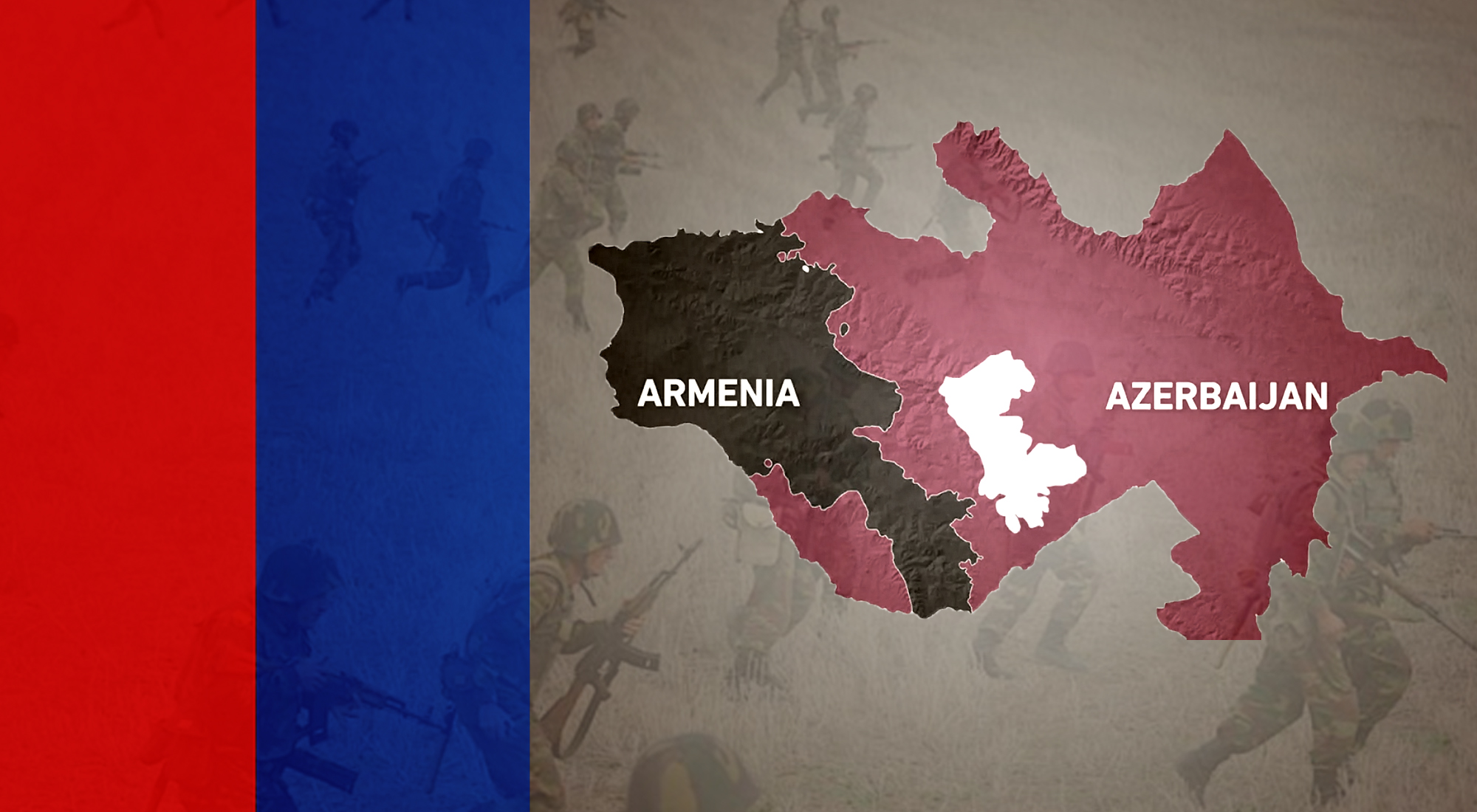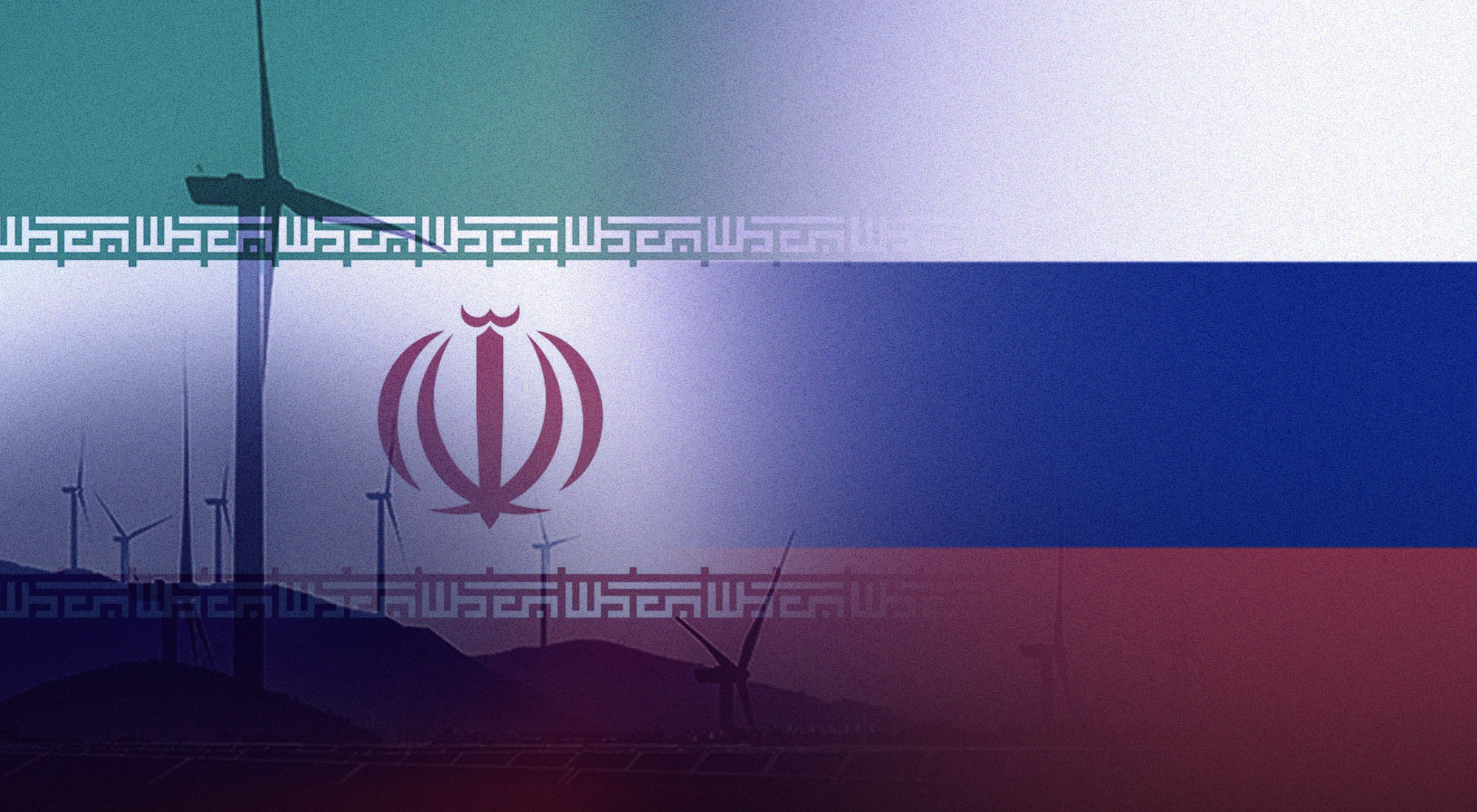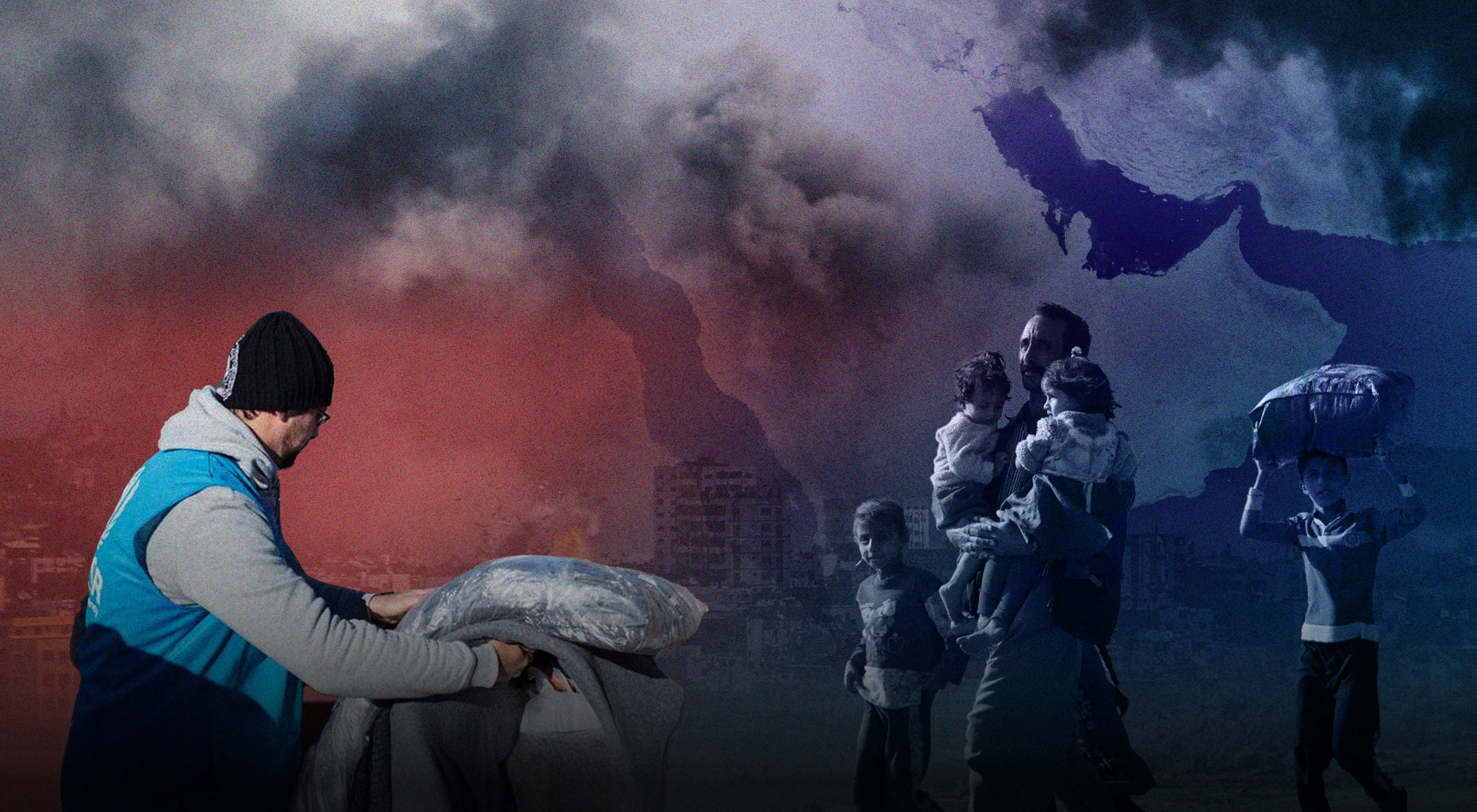On September 28, the de facto leaders of Nagorno-Karabakh, the Armenian-populated enclave within Azerbaijan, declared that by January 2023, all local governing bodies would be disbanded, ending the administrative presence in the region that began in the early Soviet era.[1]
This decision closes a chapter on one of the former Soviet Union’s most violent territorial and ethnic conflicts, setting a notable precedent where a post-Soviet state has reclaimed lost territory. The outcome of the conflict has also altered the demographic makeup, with all of Nagorno-Karabakh’s Armenian population of approximately 120,000 having left the area for Armenia.[2]
The Nagorno-Karabakh region historically hosted a diverse population. By the early 20th century, however, it had become predominantly Armenian. Following the collapse of the Russian Empire in the late 1910s, Armenians and Azerbaijanis initially clashed, but the newly established Soviet leadership enforced a tenuous peace. Yet it sowed the seeds of future conflict by making Nagorno-Karabakh an autonomous oblast within Azerbaijan, disconnected by land from Armenia.
Tensions escalated as the Soviet Union began to unravel in the late 1980s. The regional parliament of Nagorno-Karabakh voted to join Armenia, a move not recognized by the Soviet or Azerbaijani authorities. The ensuing war lasted until a 1994 ceasefire, leaving Nagorno-Karabakh and adjacent areas as a de facto independent state supported by Armenia but internationally still seen as part of Azerbaijan.
Multiple diplomatic efforts, including those led by the OSCE Minsk Group, co-chaired by Russia, the United States, and France, failed to make significant headway. Intermittent clashes, including a significant flare-up in 2016, foreshadowed the 2020 conflict, which became known as the Second Nagorno-Karabakh war. A Moscow-brokered ceasefire in November 2020 ended six weeks of fighting, with Azerbaijan reclaiming most of the lost territories, including the culturally significant city of Shusha, while Russia deployed around 2,000 peacekeepers in what remained a truncated Nagorno-Karabakh.[3]
Although the ceasefire halted active combat, it did not resolve the core dispute between Armenia and Azerbaijan over the region’s status and the future of the Armenian population. The international community remained watchful, seeking a lasting peace with several diplomatic tracks involving the warring sides, but with little effect.
The most recent military escalation, which took place in late September 2023, follows this deadlock in peace negotiations between Baku and Yerevan. The latter seemed hesitant to make a major political move that would culminate in the recognition of Azerbaijan’s territorial integrity within the borders of what once were the Soviet republics. And Baku was increasingly left with only one choice to push for a final solution to the territorial problem: a military operation that would sweep aside opposition from the Karabakh Armenians, positions held by the Armenian army, and the indecisiveness from the Armenian government.
The Impact on Big Actors
The September operation carried out by Azerbaijan has irrevocably shifted the power balance in favor of Baku. More importantly, it also left three big regional actors – Iran, Russia, and Turkey – with a different geopolitical reality. For Turkey, Azerbaijan’s victory is beneficial geopolitically; for Russia and Iran, less so.
Indeed, in the case of Russia, Azerbaijan’s victory has challenged a set of policies Moscow has applied toward the South Caucasus since the end of the Soviet Union. Following the Second Nagorno-Karabakh War of 2020, Russia appears to have shifted its support towards Azerbaijan, potentially due to its need for transit routes to Iran, especially amid the war in Ukraine and personal tensions between Russian President Vladimir Putin and Armenian Prime Minister Nikol Pashinyan, who came to power in 2018 through a popular “velvet” revolution – a fact that is still apprehensively regarded by the Kremlin, which is famous for its distaste of “color revolutions” in the neighboring countries.
Moscow’s support for Azerbaijan may involve complex strategic bargaining, possibly seeking Azerbaijani alignment with Russian-led regional organizations like the Collective Security Treaty Organization (CSTO) or the Eurasian Economic Union (EAEU). Yet, this scenario is complicated by Azerbaijan’s close ties with Turkey, which is enhancing its regional presence through new infrastructure projects, including the one through the Nakhchivan enclave and is very much unwilling to see the expansion of the Russian multilateral initiatives in the South Caucasus.[4]
Russia’s stance in the Nagorno-Karabakh conflict sends a stark message about the declining reliability of its alliances and its shift towards a more transactional foreign policy, casting doubt on the security guarantees of organizations like the CSTO and EEU. It also means that, for Russia, Azerbaijan has turned into a preferable partner exactly because of its stronger position in the international arena.
Whatever the level of flexibility of Russia’s foreign policy in adjusting to a new geopolitical reality, its influence in the South Caucasus appears to be diminishing – a situation exacerbated by the war in Ukraine, which serves as a major distraction for the Kremlin. The South Caucasus is now a hotbed of geopolitical competition, with the United States, European Union, Turkey, Iran, and China vying for influence and Russia seems to be only one of the many actors.
The multiplicity of actors has allowed Armenia, Azerbaijan, and Georgia to exercise more diplomatic agility by constructing a multi-vectoral foreign policy and diversifying their security and economic links. For instance, France’s recent move to bolster Armenia’s defense capabilities[5] and Azerbaijan’s agreement with Iran for a new railway[6] are indicative of a broader shift away from a binary Russia-West rivalry to a more multi-aligned regional landscape.
Russia, cognizant of its reduced geopolitical clout, has pivoted to different strategies in the region. It now seems more supportive of the 3+3 format, involving the three South Caucasus nations and three regional powers (Iran, Russia, and Turkey), as evidenced by the recent summit held in Tehran.[7] While the 3+3 initiative is seen as a continuation of past regional cooperation efforts for the South Caucasus, it is presently met with skepticism, particularly from Georgia and Armenia, due to internal discord among the member states. Still, following the fall of the Nagorno-Karabakh enclave, Armenia now sees greater strategic value in participating in the format, as it will allow Yerevan to build closer ties with Iran and perhaps even accelerate the rapprochement with Turkey. Over the past year, the two countries have engaged in active diplomacy (high-level meetings) over normalizing bilateral ties, which initially is expected to open the common border and perhaps even lead to the restoration of full diplomatic ties.
Western and Georgian observers often view the 3+3 initiative as an effort by Iran and Russia to assert their influence in the South Caucasus by excluding the collective West.[8] Both Iran and Russia promote regional solutions to South Caucasus challenges, a stance that Azerbaijan, increasingly disillusioned with the Western mediation efforts around Nagorno-Karabakh, also seems to prefer.
As argued, for many, the 3+3 initiative represents a renewed effort by major regional powers (Iran, Russia, and Turkey) to exert their influence over the South Caucasus. Historically, these three powers have had varying degrees of control or influence over the South Caucasus. Russia’s stance is clear, viewing the region as a buffer zone against foreign encroachment. Turkey and Iran likewise regard the region as lying within their traditional sphere of influence.[9]
Turkey and the Islamic Republic often align with Russia’s maneuvers in the South Caucasus, advocating for a region devoid of external, non-local interventions. The three champion the “regionalism” notion in the South Caucasus, implying that challenges in the region should be managed solely by neighboring powers. This perspective resonates with the broader discourse among the policymakers of the three countries, who envision a new global order. In this reimagined order, Eurasian powers would enjoy greater autonomy within their immediate vicinity. Consequently, both Iran and Russia support the idea of spheres of influence, with the evolving concept of “regionalism” in the South Caucasus.
In other words, it is the construction of an order of exclusion based on some loose understanding among regional powers, which means that the balance of power concept made its way back. Proponents of realism have prevailed against advocates of the liberal world order, which seems increasingly threatened by growing external opposition, internal troubles, and declining authority/prestige (the troubles a chaotic U.S. withdrawal from Afghanistan left this country in is a good example). For Iran, Russia, and Turkey, the balance of power idea is a concept that resonates well with each of these states’ historical experiences.[10]
The three have similar geographic dilemmas that over the course of the past several centuries informed their behavior and continue to haunt the countries’ political classes. Encirclement by enemies is a constant feature in nationalist discourses. The balance of power for Iran, Russia, and Turkey is a safe refuge, partly because it is what these civilizations always did – how they survived, grew, and evolved into a dominant force in their respective neighborhoods.
The three powers have dominated in one form or another over parts or the entirety of the South Caucasus. Most explicit is Russia arguing that the space is a buffer zone against potential instability. Turkey and Iran are more modest, but they too see the space as a part of their traditional zone of influence. Imperial thinking does not necessarily involve direct military control (though in Russia’s case it is indeed so), but rather in the twenty-first century it is of a more nuanced approach.
As Iran, Russia, and Turkey have dominated the South Caucasus for centuries, it is not surprising that the three are more careful not to overreact when dealing with each other and more eager to acknowledge each other’s red lines. Resurgent imperial thinking helps Iran, Russia, and Turkey better articulate what they want. To be sure, competition is never absent from this kind of order-building, but the still prevalent Western understanding that the former imperial rivals cannot coexist is a total misreading of the historical and present nuances behind Iranian, Turkish, and Russian thinking. In Eurasia, the empires rarely formed official alliances. They rather built bilateral relations on mutual respect and were mostly motivated by the politics of balance of power. They were also religious about their respective zones of influence. This framing could be more helpful in revealing the present worldview of Eurasian powers.
Yet, even among the major regional players, consensus is not absolute. Russia supports the 3+3 format but remains cautious, given the power the format could give Turkey and Iran. With Russia distracted by its war in Ukraine,[11] Iran is exploiting the opportunity to strengthen its position in the South Caucasus exactly because Russia needs the Islamic Republic to alleviate the negative effects of the Western sanctions imposed on Moscow as a result of the attack on Ukraine.
Another significant geopolitical development that would further undermine Russia’s stance in the South Caucasus is the deterioration of relations between Moscow and Yerevan. With Nagorno-Karabakh’s capitulation to Baku, the rift between Yerevan and Moscow is poised to deepen. This tension builds on past grievances since Pashinyan’s rise to power and is intensified following Armenia’s military defeat in the 2020 war.
Pashinyan has on numerous cases openly criticized Russia and hinted at its waning influence in the South Caucasus.[12] The tensions grew as Armenia withdrew its representative from CSTO,[13] then engaged in military exercises with the United States and supported Ukraine, including a symbolic visit to Kyiv by Pashinyan’s wife and a series of meetings between Armenian and Ukrainian officials. Armenia has also ratified the International Criminal Court (ICC) statute, which essentially would preclude Putin from visiting Armenia.[14] The Russian president already had to skip several trips, among which the most notable was the BRICS summit held in South Africa earlier this year after the ICC issued a warrant for the arrest of the Russian president.
The outcome in Nagorno-Karabakh will undoubtedly influence Armenia’s view of its alliance with Russia and its overall strategic posture. Yerevan might lean towards Iran to balance Azerbaijan’s power and may even seek to mend its historically difficult relations with Turkey, which would allow Yerevan to limit the thrust of the Ankara-Baku partnership.
Yet there are limits to what Armenia can do. Armenia remains economically dependent on Moscow, as highlighted by the surge in bilateral trade to $5.3 billion in 2022.[15] Despite Russia’s failure to provide security assistance after the 2020 conflict, its military presence in Gyumri is still seen as a vital component of Armenia’s military doctrine. Even as the CSTO’s significance fades for Yerevan and even the withdrawal from the grouping could be considered, Armenia is likely to preserve its alliance with Russia as a tool to balance Azerbaijan.
Looking ahead, Armenia’s reluctance to oppose Azerbaijan when it came to Nagorno-Karabakh, coupled with the growing Azerbaijan-Russia partnership, suggests a long-term development with Moscow-Yerevan ties likely to continue facing significant constraints. This fits into a broader pattern of Russia’s behavior and the small countries’ reactions to Moscow’s policies in the region, from the Black Sea to Central Asia. There Russia is presently facing a multi-aligned geopolitical landscape, which creates favorable conditions for smaller states to diversify their external relations.
Parallel to the growth of the influence of Iran, Russia and Turkey in the South Caucasus, the West’s influence in the region is experiencing significant challenges. There has been a certain retrenchment of Western influence in the South Caucasus. While it does not signify a definitive decline in the West’s fortunes, it is nevertheless important for Washington and Brussels to formulate a more robust approach toward the region. Decreasing the tensions with Turkey could be one of the steps. Increasing economic engagement with the region would be another. Delay could be damaging. Georgia, which serves as a door for the West to the Caspian basin and on to Central Asia, could be the biggest loser if Washington shifts its foreign policy away from the region. An alternative could be a Russian model of peacebuilding and regional order where Georgia, Armenia, and Azerbaijan will face a lack of foreign policy options if the West’s unwillingness to commit to the region continues to grow.
The recent 3+3 summit held in Tehran underscored concerted efforts by Turkey, Iran, and Russia to curb Western influence. In response, the EU and the U.S. should articulate their objectives for the region more clearly, with strategies such as offering Georgia EU candidacy to bolster its Western alignment and enhancing ties with Armenia, particularly in light of its strained relationship with Moscow.
Shifting Geography and the New World Order
In many ways, the fall of Nagorno-Karabakh accelerated the pre-existing trends but also brought about new developments. The first and foremost change concerns geography. The South Caucasus has been historically dominated by neighboring states. Whether it was the Sasanian and Byzantine empires in late antiquity or later Ottoman and Persian states, the region was exclusively subject to one or two powers. The idea is that the region was mostly closed to the outside non-regional influence. The trend continued in the 19th-20th centuries, when the South Caucasus was exclusively dominated by Russian power. The end of the Soviet Union changed this geopolitical reality when several powers were able to penetrate the region. Yet the pace of the change was relatively slow; Russia was still able to minimize the extent to which the neighboring or non-regional countries were able to act in the South Caucasus: Turkey, Iran, the U.S., EU, and, to a certain extent, China, have been influencing the region to a limited degree.
But the second Nagorno-Karabakh war and the fall of the enclave in September 2023 accelerated this process. The South Caucasus’ borders are increasingly shifting. No single power or even a duo of countries can dominate the region. It reflects geopolitical changes in the world, where the emerging multi-polar world ushers in a different set of rules. Exclusive geopolitical control is no longer viable and the 2020 war showed exactly this.
There is also yet another dimension to the unfolding geographic change. The war also solidified that the Caspian Basin and South Caucasus are inextricably linked to the greater Middle East. Russia and Turkey are basing their strategies in the region on developments in the Middle East and the Black Sea region. Not since the end of the Soviet Union has the South Caucasus been such a critical point for the powers around it. In a way, this re-emergence of close contacts between the South Caucasus and the Middle East is a return to normalcy, which was disrupted in the early 19th century by Russian annexation of the South Caucasus. Indeed, in pure geographic terms the region is better connected to Turkey and Iran than to Russia, with which it shares the impassable Caucasus Mountain range.
This also means that the role of the South Caucasus in the thinking of Iran and Turkey, and by extension, Russia, has grown. Seen if not as a complete backwater region in the calculus of large powers, the South Caucasus has nevertheless experienced a lack of attention. This was especially true for Iran, which now struggles to retain its weakening position in the region.
It is true that Iran was never a dominant power in the South Caucasus. Unlike Russia or Turkey, the traditional power brokers, it has not had a true ally. Tehran was certainly part of the calculus for states in the region, but it was not feared like Ankara or Moscow. And yet, the South Caucasus represents an area of key influence for Iran, based on millennia of close political and cultural contacts various Persian empires had with the South Caucasus.
The resolution of the Nagorno-Karabakh conflict has changed Iran’s calculus. The South Caucasus will feature higher in Tehran’s foreign policy agenda than before. The lifting of U.S.-imposed sanctions could augment Iran’s projection of financial and diplomatic power in the South Caucasus. Still, a more realistic approach for Tehran is to align more with Russia, as both loath growing Turkish influence and the Islamic Republic does not object to growing Russian influence as much as it does resent the West’s and Turkey’s presence. Surely, interests with Russia do not always align, but for Tehran, Moscow is a traditional power in the South Caucasus that seeks to maintain the status quo. Turkey, however, on the other hand, disrupts it, seeking greater influence.
[1] Christian Edwards, “Nagorno-Karabakh will cease to exist from next year. How did this happen?,” CNN, September 28, 2023, https://edition.cnn.com/2023/09/28/europe/nagorno-karabakh-officially-dissolve-intl/index.html.
[2] George Wright, “Nagorno-Karabakh: Armenia says 100,000 refugees flee region”, BBC, September 30, 2023, https://www.bbc.com/news/world-europe-66969845.
[3] Alexandra Odynova, “Russia brokers Armenia-Azerbaijan ceasefire, but only 1 side is happy”, CBS News, November 10, 2020, https://www.cbsnews.com/news/azerbaijan-armenia-war-russia-ceasefire-but-only-1-side-is-happy/.
[4] “A New Transportation Connection Will Be Established Between Kars Nakhchivan Railway and Turkey-Azerbaijan”, Railly News, June 21, 2023, https://www.raillynews.com/2023/06/A-new-transportation-link-will-be-established-between-Kars-Nakhchivan-Railway-and-Turkey-Azerbaijan./.
[5] Mark Dovich, “Armenia and France sign first weapons deal,” Civilnet, October 24, 2023, https://www.civilnet.am/en/news/754962/armenia-and-france-sign-first-weapons-deal/
[6] Ruslan Rehimov, “Baku signs deal with Tehran for transportation lines to Nakhchivan via Iran”, Anadolu, October 10, 2023, https://www.aa.com.tr/en/world/baku-signs-deal-with-tehran-for-transportation-lines-to-nakhchivan-via-iran/3014861#:~:text=%22An%20agreement%20has%20been%20reached,Transport%20Corridor%2C%E2%80%9D%20he%20stressed.
[7] “Tehran to host ‘3+3’ format meeting on Caucasus,” Iran Front Page, October 22, 2023, https://ifpnews.com/tehran-host-3-3-format-meeting-caucasus/
[8] “MFA: Tbilisi Won’t Attend “3+3 Platform” Meeting in Tehran,” Civil.ge, October 22, 2023, https://civil.ge/archives/564980
[9] Emil Avdaliani, “China, Russia, and the Construction of Hierarchical Order,” TRENDS Research & Advisory, December 1, 2023, https://trendsresearch.org/research.php?id=420&title=China,_Russia,_and_the_Construction_of_Hierarchical_Order
[10] Emil Avdaliani, “Shifting Global Balance of Power and the South Caucasus,” Springer, August 30, 2023, https://link.springer.com/chapter/10.1007/978-981-19-4037-8_2.
[11] Holly Ellyatt, “In the ultimate irony, Russia’s obsession with Ukraine may have weakened its power over its other neighbors,” CNBC, October 26, 2023, https://www.cnbc.com/2023/10/26/russias-influence-over-its-backyard-declines-as-it-focuses-on-ukraine.html.
[12] “Kremlin Dismisses Armenian PM’s Suggestion that Russia is Quitting South Caucasus,” September 5, 2023, Asharq Al Awsat, https://english.aawsat.com/world/4527786-kremlin-dismisses-armenian-pms-suggestion-russia-quitting-south-caucasus.
[13] “Armenia recalls its envoy to CSTO, appoints him ambassador to the Netherlands,” TASS, September 5, 2023, https://tass.com/world/1670235.
[14] “Armenia ratifies ICC Rome Statute in show of defiance against Russia,” Euronews, October 3, 2023, https://www.euronews.com/2023/10/03/armenia-ratifies-icc-rome-statute-in-show-of-defiance-against-russia.
[15] Emil Avdaliani, “Russia – Armenia: 2023/24 Trade and Investments Dynamic,” Russia Briefing, July 25, 2023, https://www.russia-briefing.com/news/russia-armenia-2023-24-trade-and-investments-dynamic.html/.








